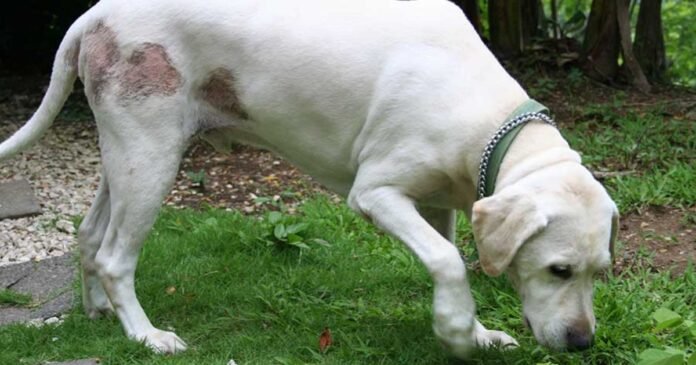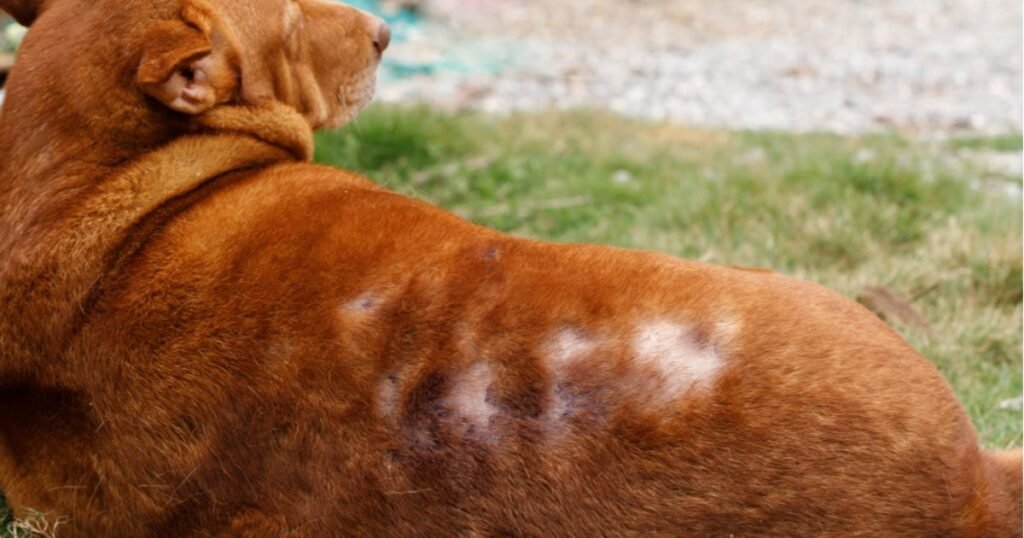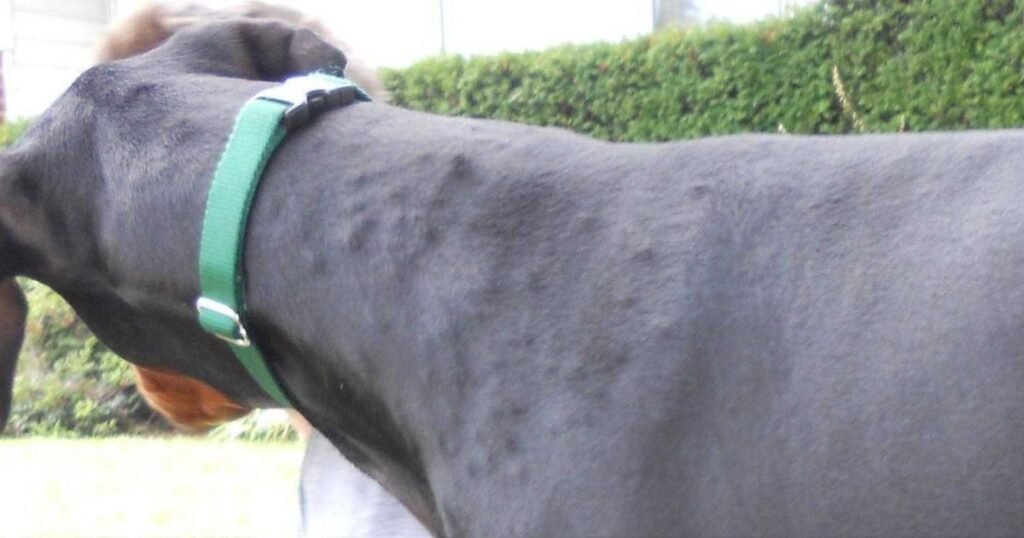
If you’ve noticed a black bump on your dog, it can be alarming, but it’s important to understand that there are many potential causes for such bumps. While some may be harmless, others could signal a medical condition that requires attention. In this guide, we’ll explore the possible reasons for a black bump on a dog’s skin, how to identify them, and when it’s time to consult your vet.
What Are Black Bumps on Dogs?

A black bump on a dog’s skin refers to any dark-colored growth or swelling that appears on their body. These bumps can vary in size, shape, and texture and may develop anywhere on the body. It’s essential to examine the bump closely to determine its characteristics, as this will help in identifying the cause.
Black bumps on dogs can be a result of various factors, including cysts, infections, tumors, or skin conditions. Some may be benign, while others may require treatment or even surgery. The key to managing a black bump on your dog is early detection and intervention.
Must Read : Pets Place The Ultimate Destination for Pet Care, Products & Services
Common Causes of Black Bumps on Dogs
Discovering a black bump on your dog can be concerning. However, these bumps are often caused by a variety of conditions, some benign and others more serious. Identifying the cause early can help you take the necessary steps to ensure your pet’s health and comfort. In this article, we’ll explore the common causes of black bumps on dogs, their symptoms, and the appropriate treatments.
1. Sebaceous Cysts
Sebaceous cysts are among the most common causes of lumps and bumps on dogs. These cysts form when hair follicles or sebaceous glands become blocked with oil, dead skin cells, or debris. When a sebaceous cyst forms, it often appears as a small, raised black bump on the skin.
- Symptoms: Sebaceous cysts are typically round, firm, and non-painful. They might be movable under the skin, and while they are usually harmless, they can become infected. An infected cyst may appear red, swollen, or leak pus.
- Treatment: Most sebaceous cysts don’t require treatment unless they become infected or excessively large. If the cyst is causing problems, your vet might drain it, or in more severe cases, surgically remove it.
2. Mast Cell Tumors
Mast cell tumors (MCTs) are cancerous growths that can appear as black or brown lumps on your dog’s skin. These tumors arise from mast cells, which play a role in allergic reactions. Mast cell tumors can vary in size and may appear suddenly.
- Symptoms: Mast cell tumors often feel firm or soft to the touch. They might change size or color over time and could sometimes ulcerate. These tumors may cause itching, swelling, or discomfort.
- Treatment: Mast cell tumors require veterinary attention for diagnosis and management. Your vet will typically perform a fine needle aspiration (FNA) or biopsy. If malignant, treatment may involve surgery, chemotherapy, or radiation therapy to remove or shrink the tumor.
3. Lipomas
Lipomas are benign fatty tumors commonly found in older dogs. These tumors are soft, movable, and generally harmless, but they can sometimes appear as dark or black bumps on the skin.
- Symptoms: Lipomas are usually painless and grow slowly over time. They typically don’t interfere with your dog’s health unless they grow large or become uncomfortable.
- Treatment: Lipomas usually don’t require treatment unless they affect your dog’s movement or become painful. If necessary, surgery is the most common method of removing lipomas.
4. Skin Tags
Skin tags are benign growths that may appear as small, hanging lumps, often mistaken for black bumps. Though they are harmless, they can still cause concern if they become irritated or catch on something.
- Symptoms: Skin tags are generally soft, flexible, and often occur in areas of friction, like the armpits or neck. They can be dark in color but are typically flesh-toned.
- Treatment: Most skin tags don’t require removal unless they cause irritation or discomfort. If this happens, surgical removal may be recommended by your vet.
5. Fungal Infections
Fungal infections can lead to a variety of skin issues, including the formation of black bumps. These infections are usually caused by fungi such as dermatophytes, which can lead to hair loss, irritation, and inflammation.
- Symptoms: Fungal infections often cause circular patches of hair loss, with dark bumps or scabs in the center. These areas can be itchy, inflamed, and uncomfortable for your dog.
- Treatment: Fungal infections can be treated with antifungal medications, including topical creams, shampoos, or oral medications prescribed by your vet. Treatment will help clear the infection and alleviate symptoms.
6. Warts
Warts are typically caused by a viral infection (canine papillomavirus) and may appear as small, raised, cauliflower-like lumps, sometimes black or dark brown. Warts are more common in young dogs or those with weakened immune systems.
- Symptoms: Warts are generally painless and can appear on various body parts, including the face, legs, or paws. They may look dark or black as they develop.
- Treatment: In most cases, warts resolve on their own. However, if they cause irritation, become infected, or grow rapidly, your vet might recommend surgical removal.
7. Allergic Reactions
Allergic reactions can lead to swelling, redness, and the formation of bumps on your dog’s skin, which may appear as dark-colored lumps. These reactions are often due to environmental allergens, food sensitivities, or insect bites.
- Symptoms: Allergies in dogs can cause itching, redness, hair loss, and the development of hives or bumps. If left untreated, these bumps can become inflamed or infected.
- Treatment: The most effective treatment for allergies involves identifying and removing the allergen. Anti-inflammatory medications, antihistamines, or corticosteroids prescribed by your vet can help manage symptoms and reduce inflammation.
When to Consult Your Veterinarian
While many black bumps on dogs are benign, it’s important to be proactive and consult your vet when necessary. Consider visiting your vet if:
- The bump grows rapidly or changes in size or color.
- The bump causes discomfort, pain, or noticeable irritation.
- The bump begins to bleed, discharge, or emit a foul odor.
- Your dog exhibits other signs of illness, such as lethargy or loss of appetite.
Early detection is key to effective treatment. If you’re unsure about a black bump on your dog, it’s always better to consult your vet to rule out any serious health concerns.
When Should You Worry About a Black Bump on Your Dog?

While many black bumps on dogs are benign, some can be more serious and require veterinary attention. Here are some signs that you should take your dog to the vet:
- Rapid Growth: If the bump is growing quickly or changing in size, it could be a sign of a more serious condition, such as a tumor.
- Pain or Discomfort: If your dog is showing signs of pain, discomfort, or sensitivity around the bump, it may require medical attention.
- Bleeding or Discharge: If the bump is bleeding, oozing, or secreting pus, it may be infected and needs treatment.
- Behavioral Changes: If your dog becomes lethargic, stops eating, or shows other signs of illness, it could indicate an underlying health issue.
How to Care for a Dog with a Black Bump
Here are some steps you can take to care for your dog while waiting for a veterinary diagnosis:
- Keep the Area Clean: Gently clean the area around the bump with warm water and mild soap to prevent infection.
- Avoid Scratching or Biting: Prevent your dog from scratching or biting the bump, as this could lead to infection. An Elizabethan collar (cone) can help in this case.
- Monitor for Changes: Keep an eye on the bump for any changes in size, color, or texture. If you notice any concerning signs, take your dog to the vet immediately.
- Provide Comfort: If the bump is causing irritation or discomfort, try to make your dog as comfortable as possible by providing a soft bed and limiting physical activity.
Conclusion
A black bump on your dog may seem alarming at first, but many times, it is a benign growth that doesn’t require urgent treatment. However, it’s essential to be vigilant and observe your pet closely for any changes or signs of discomfort. Whether it’s a sebaceous cyst, a lipoma, or a more serious issue like a mast cell tumor, your veterinarian can provide the best course of action for diagnosis and treatment.
Always remember, the sooner you notice any changes in your dog’s skin, the better the chances for effective treatment. If in doubt, always consult your vet to ensure your pet’s health and well-being.




